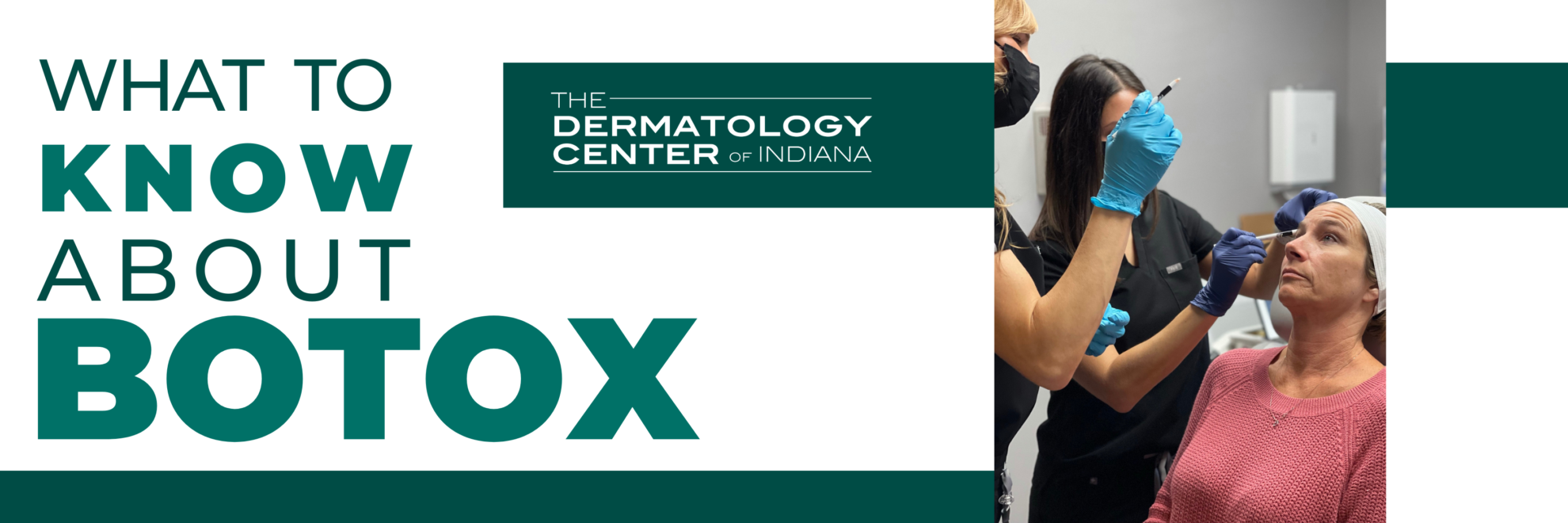
What You Can Expect From Your Botox® Treatment Both During and After
Botox is a widely-used treatment for both cosmetic issues, such as fine lines or wrinkles, as well as medical conditions, such as Hyperhidrosis. A quick, simple injection to the affected area can relieve discomfort, improve your appearance, and boost your self-confidence and quality of life.
If you’re thinking about getting Botox® to treat a cosmetic or medical condition, you’ve come to the right place to learn more about what Botox® is, how it’s used, and what to expect from your Botox® treatment.
What is Botox®?
Botox® is a brand name for a toxin that is made from the bacterium Clostridium Botulinum. There are other brands such as Dysport and Xeomin, but Botox® gained popularity as the first injectable botulinum toxin.
How Does Botox® Work?
Botox® is a neurotoxin that blocks signals from the nerves to the muscles, causing muscles to relax and soften. Preventing the nerves from activating certain muscles can have a profound impact on reducing the appearance of wrinkles and fine lines or relieving more serious or chronic medical conditions.
Millions of individuals have chosen Botox® injections as an effective way to treat cosmetic and medical conditions and it has a robust safety record over the decades it has been used.
How is Botox® Used?
Botox® injections can be a helpful and effective solution for a variety of conditions, both cosmetic and medical.
Cosmetic treatments using Botox® can include:
- Lips: A couple of units of Botox® can create a subtle “flip” of the top lip by relaxing the muscle in the upper lip. Additionally, a few units of Botox® can prevent the top lip from rising too high and showing the gums when smiling.
- Eyes: Botox® injections are a popular treatment to reduce the appearance of crow’s feet, the fine lines around the eyes.
- Eyebrows: A few units of Botox® injected between the eyebrows and at the tail-end of the brows can create a subtle “brow lift” and open up the eyes without causing a surprised look.
Medical conditions that can be treated with Botox® include:
- Underarm & Palm Sweating (Hyperhidrosis): Botox® injections can block the nerve signals that cause sweating and can prevent sweat glands from over-producing sweat.
What to Expect From Your Botox® Treatment Before and After
Botox® has been used for many years and has an excellent safety record; however, every person is different and it’s important to understand what to expect from your Botox® treatment.
A Botox® procedure only takes a few minutes, is non-invasive in most cases, and has few if any major side effects for most people.
Before your Botox® treatment, it is advised that you avoid alcohol for a week leading up to the procedure, and refrain from taking anti-inflammatory medications such as aspirin or ibuprofen up to two weeks prior to the procedure, as it can increase risk of bruising following treatment.
Before receiving a Botox® treatment, you will have an in-depth conversation with your provider about what to expect, and you should use this time to ask any questions you have and ensure you are comfortable and feel knowledgeable going into the treatment.
Following most types of Botox® injections, patients experience mild if any side effects. Possible, temporary side effects can include:
- Pain, swelling, or bruising at the injection site
- Headache or flu-like symptoms
- Numbness
- Crooked smile or drooling
- Droopy eyelid
- Eye dryness or excessive tearing
- Weakness in nearby muscles
Side effects vary depending on the location of your Botox® treatment and the specific condition you are treating. In most cases, patients are able to go back to their lives as normal following the treatment but may be advised to avoid exercise and remain upright for 4 hours.
Patients also should avoid rubbing the injection site to prevent spreading the Botox® to other areas.
The effects from your Botox® treatment should last between 3 to 4 months before activity returns to the muscles. Over time, if you continue to treat the affected area with Botox® injections, your cosmetic or medical condition should improve.
How to Get the Best Results From Your Botox® Injection
Seeking care from a trained and certified medical aesthetics provider ensures you will have a safe, effective, and positive experience with Botox®. At the Dermatology Center of Indiana, we work closely with each patient to discuss your needs, present your options, and provide a clear picture of what you can expect from your treatment.
Our team of aesthetic providers is highly skilled, with advanced training and experience for a range of procedures and treatments. Our team also values exceptional patient care above all else, so you’ll know you’re in good hands.
Come in for a free consultation to learn what will work best for you. Schedule an appointment today.